Let us see the step-by-step approach to connecting Power BI to SQL Server Database. In addition, how to use Queries against the data present in Tables with an example.
Step by Step Approach to Connect Power BI to SQL Server
If you haven’t started the Desktop yet, Double click on the desktop to open it. Once it is open, it looks like the below screenshot. Please click on the Get Data hyperlink.
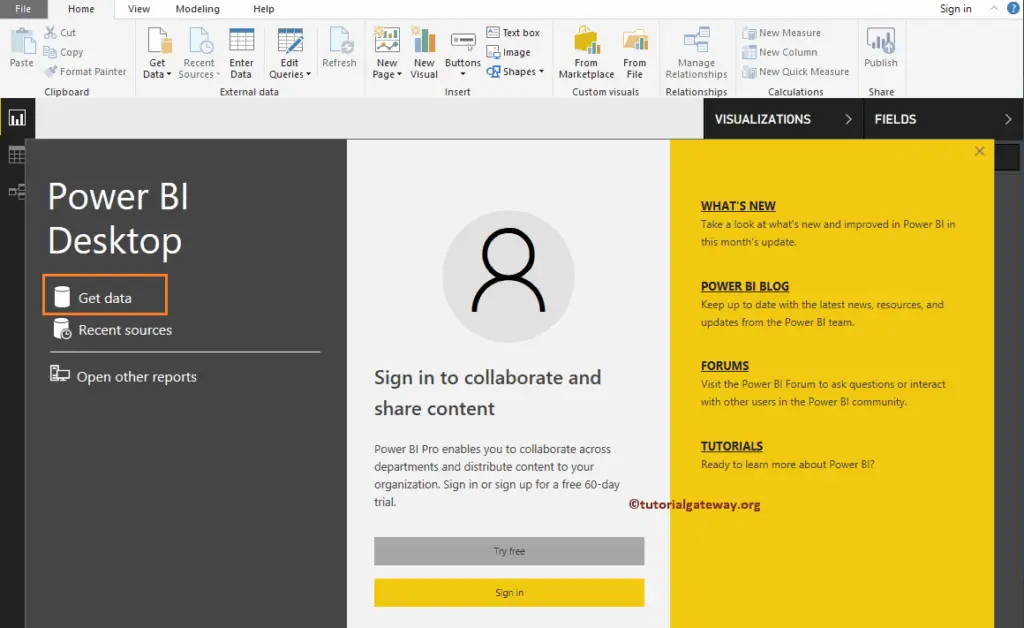
On the visualization page, click the Get Data option under the Home tab and select the SQL Server, as shown below. Or select More options.
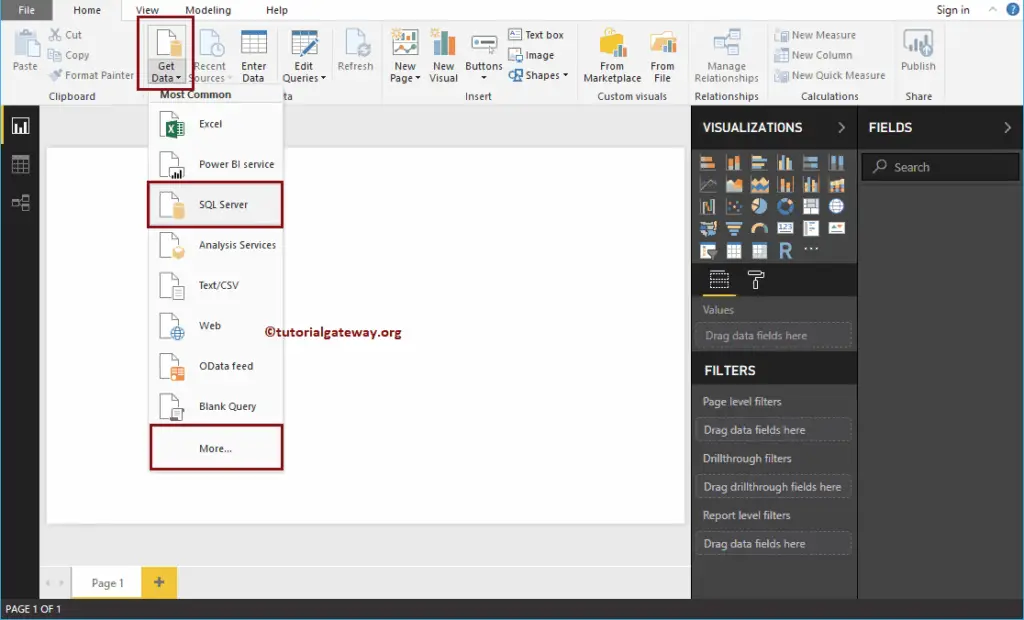
We are selecting More options to show you the following window. Use this window to select your desired Data source. Here, we are discussing how to Connect Power BI to SQL Server. So, let me choose the SQL Server Database Option.
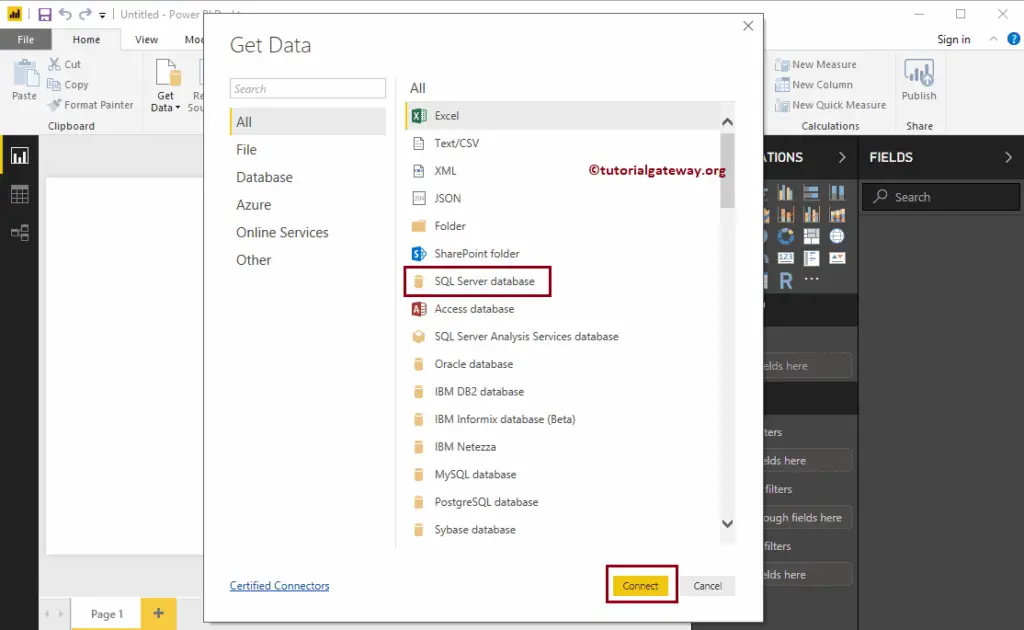
Connect Power BI to SQL Server Options
The following is the list of available fields to fill in to connect the desktop to the Database.
- Server: Please provide the Instance name. If you installed Server with the default instance, the instance name is the computer name or localhost.
- Database: This is optional. If you want to use a custom query, then it is required.
- Data Connectivity Mode: Please select whether you want to import or Direct query.
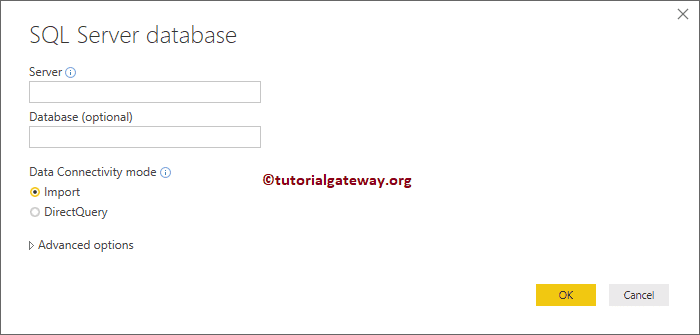
Clicking the Advanced option shows you the advanced properties.
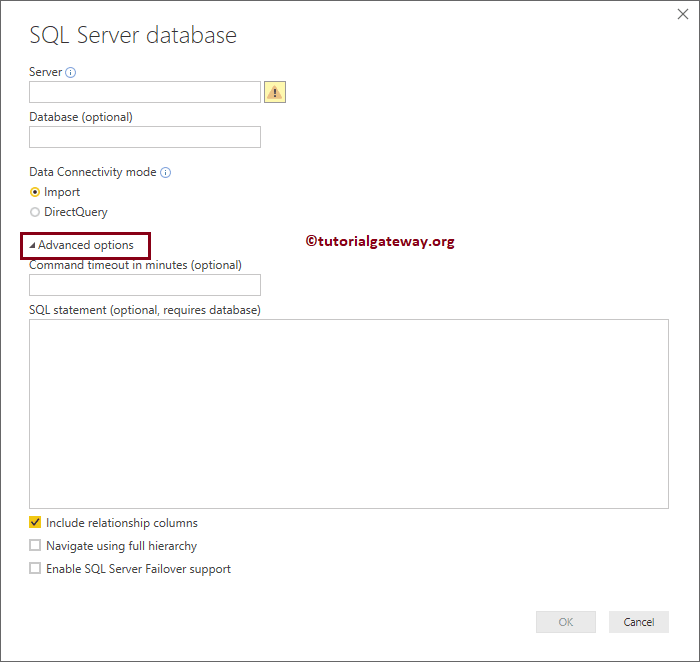
You can write your own query to extract data from the specified Database. To do this, write your query inside the SQL Statement box.
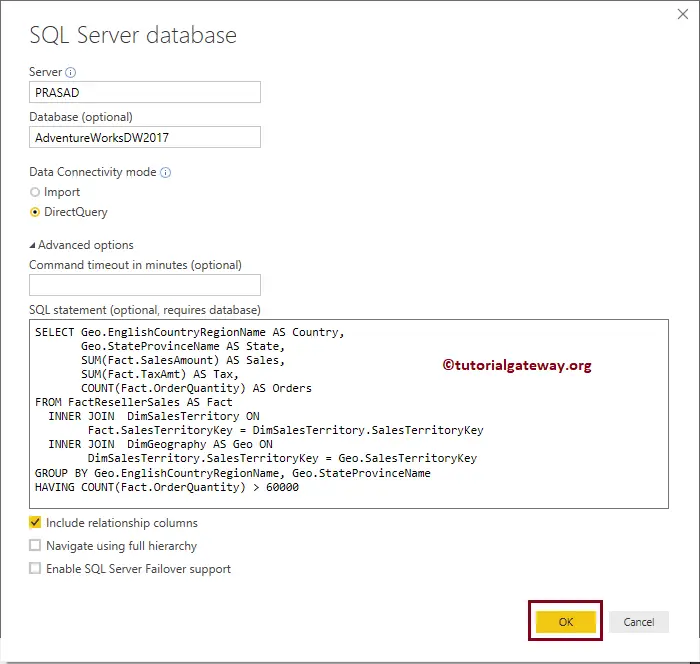
The custom Query that we used in the above Connect Power BI to SQL Server screenshot is:
SELECT Geo.EnglishCountryRegionName AS Country,
Geo.StateProvinceName AS State,
SUM(Fact.SalesAmount) AS Sales,
SUM(Fact.TaxAmt) AS Tax,
COUNT(Fact.OrderQuantity) AS Orders
FROM FactResellerSales AS Fact
INNER JOIN
DimSalesTerritory ON
Fact.SalesTerritoryKey = DimSalesTerritory.SalesTerritoryKey
INNER JOIN
DimGeography AS Geo ON
DimSalesTerritory.SalesTerritoryKey = Geo.SalesTerritoryKey
GROUP BY Geo.EnglishCountryRegionName, Geo.StateProvinceName
HAVING COUNT(Fact.OrderQuantity) > 60000
While Connecting Power BI to SQL Server, click Load if you want to use this data. Let me click the cancel button because I want to select multiple tables.
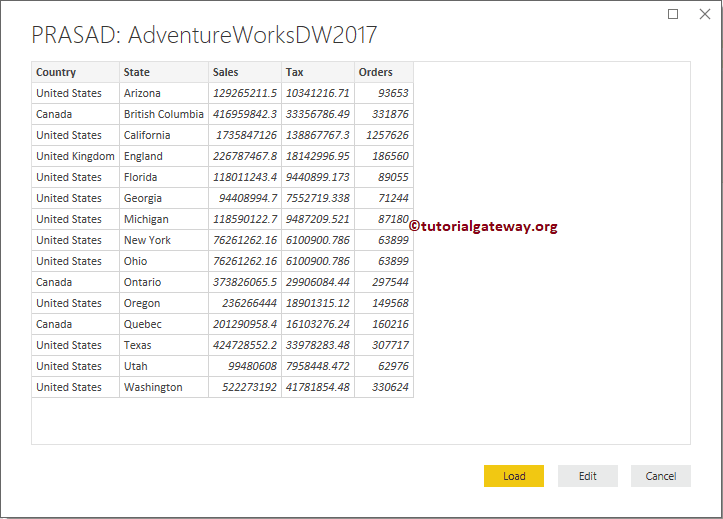
NOTE: Don’t worry about the Query. Just understand the procedure. However, If you want to learn, please refer to our SQL Server Tutorial.
Let me use the local instance and click OK.
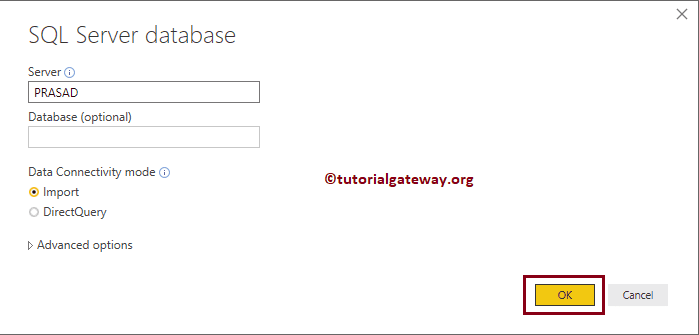
We are using the current local Windows credentials for this Connect Power BI to SQL Server demo. If you don’t have permission to access the Server, use another person’s Windows credentials by selecting Use alternative credentials.
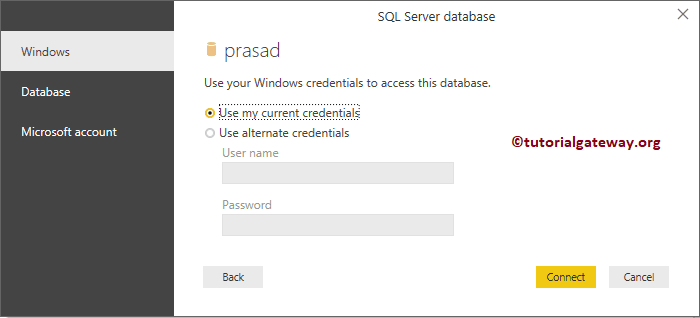
In real-time, we only use Database credentials. For this, select the database and enter the username and password provided by the Admin person.
For now, I am using the current Windows credentials.
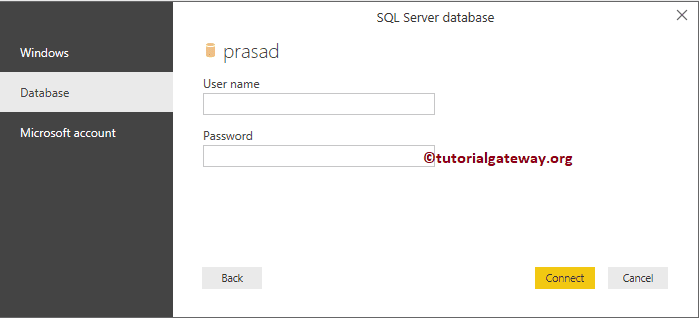
Load or Select Tables
Under the Display options, it lists out the Databases available for that Instance. In this example, We are selecting the AdventureWorksDW2017 database.
You can download this database from Microsoft’s official Download Center or GitHub for free.
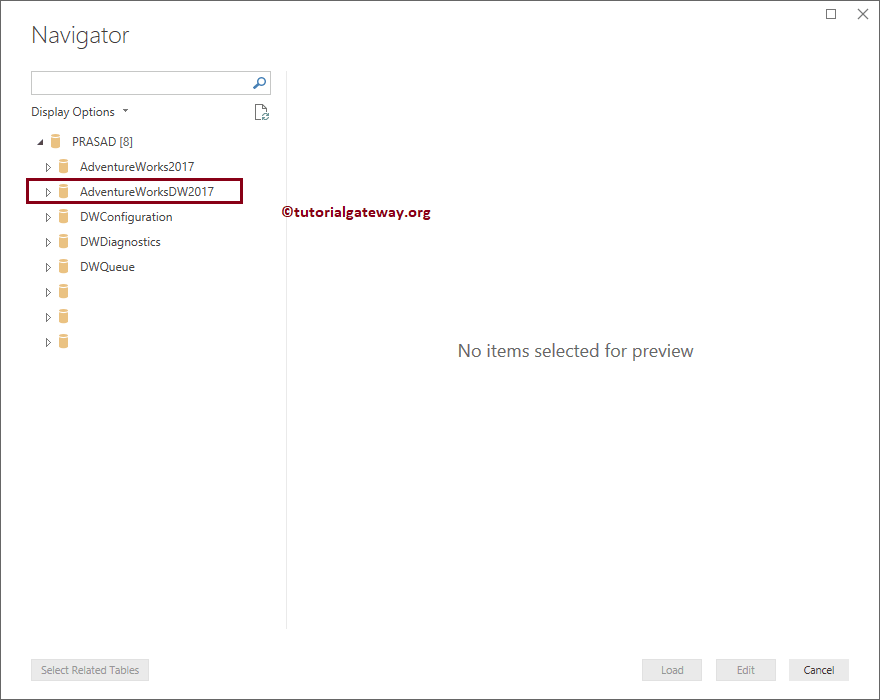
Expanding the Database folder displays the available Tables and Views. Selecting the table shows the Data Preview.
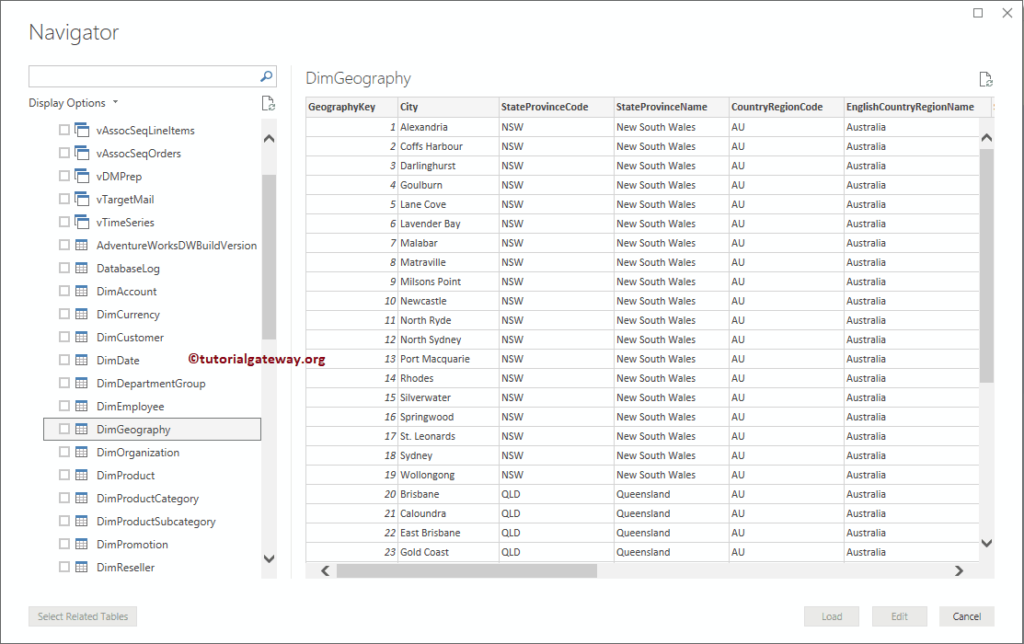
From the below Connect Power BI to SQL Server screenshot, you can see that we are selecting the required tables. If you are confused about selecting tables, choose one Measure table (Orders or Sales) and click the Select Related Tables button.
- Load: This will load data from selected tables to Power BI. As I know the data is clean, let me click the Load button.
- Edit: Click this button to alter the columns or to cleanse the data
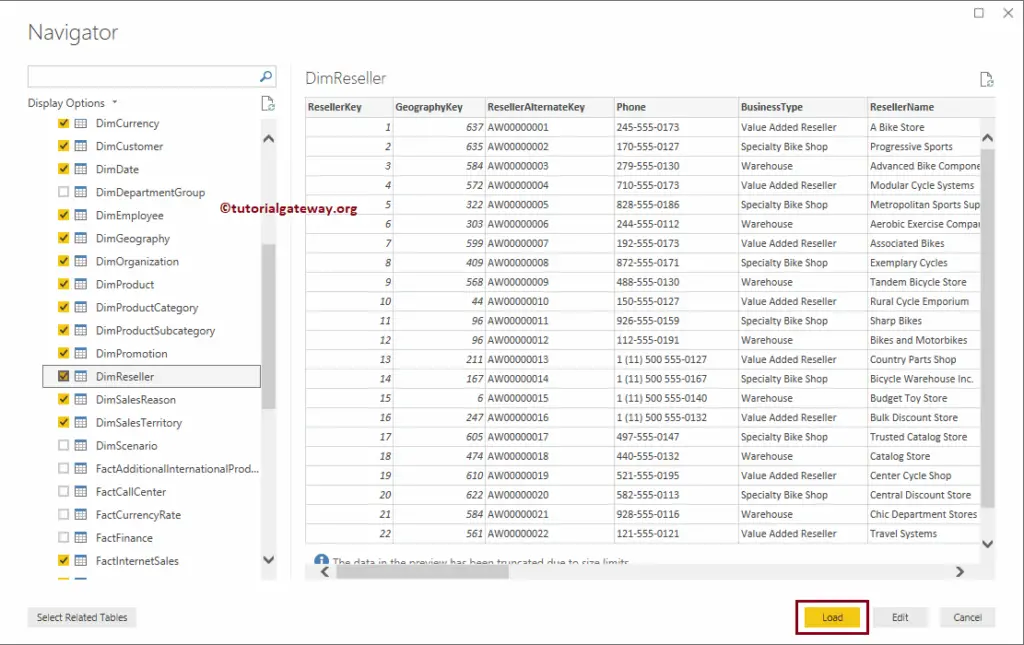
Please wait until the load is complete
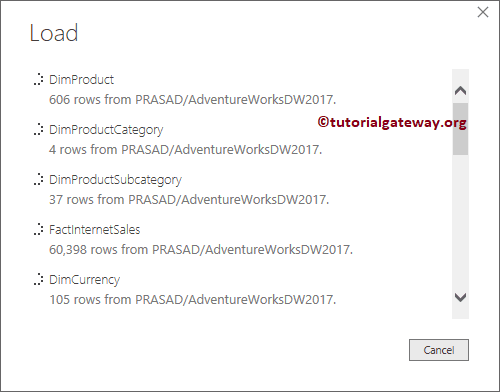
You can see the Tables we selected from the database under the Fields section.
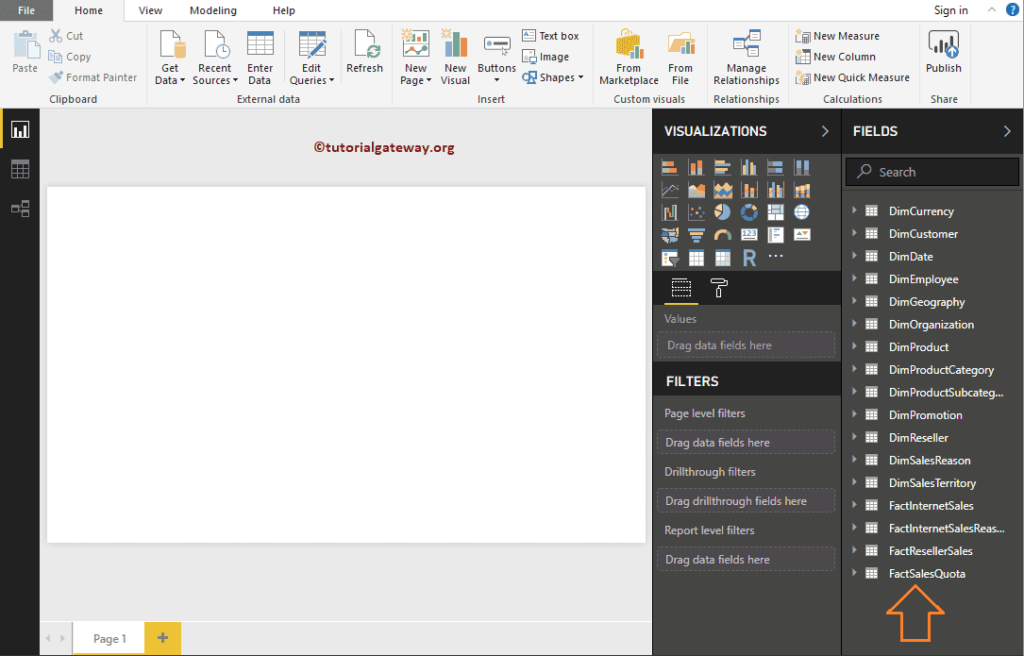
Expand any table to see the columns (fields) inside that table.
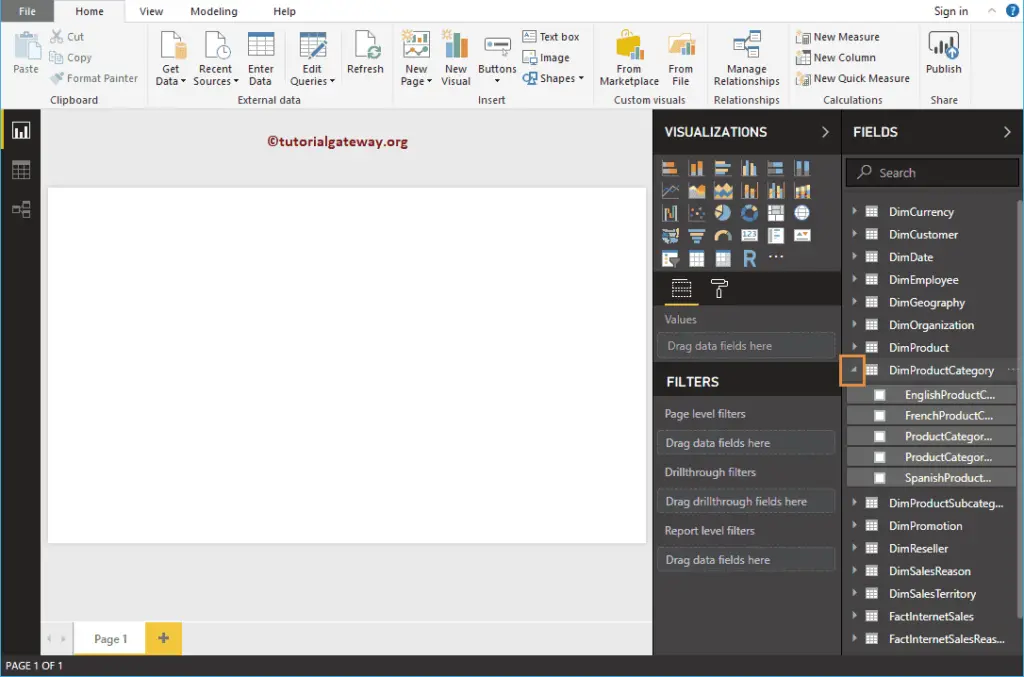
TIP: This is the Dataset we will use in most of the Power BI tutorials.
